5 Tips: Balancing Risks in Cryptocurrency Precious Metal Investments
Note: This post may contain affiliate links, and we may earn a commission (with No additional cost for you) if you purchase via our link. See our disclosure for more info. The gold and crypto world is constantly changing. This is not financial, investment, legal, or professional advice. So, please verify the information on the gold and cryptocurrency provider’s websites.
Click below and listen to the podcast on this page.
You've heard of the potential rewards of investing in cryptocurrencies and precious metals. But, have you considered the balancing risks? Balancing these two asset classes can be tough but rewarding for your portfolio. As you navigate this complex landscape, it's vital to understand how to mitigate potential pitfalls while maximizing your opportunities. You must consider several key factors. They range from diversification to secure storage solutions. Let's explore five tips. They can help you manage risk and protect your investments in these volatile markets.
Key Takeaways
- Diversify investments across cryptocurrencies, stablecoins, and precious metals to spread risk and maximize potential returns.
- Stay informed about market influences, including regulatory changes and global economic conditions affecting both asset classes.
- Assess liquidity needs and balance between highly liquid digital assets and potentially less liquid physical metals.
- Understand and plan for tax implications, keeping detailed records of all transactions for accurate reporting.
- Implement robust security measures for both digital wallets and physical storage of precious metals.
Diversify Across Asset Classes
Embrace diversification across asset classes to safeguard your investment portfolio. By combining cryptocurrencies and precious metals, you can mitigate risks associated with market volatility and enhance overall portfolio stability. This strategy allows you to balance the high-risk nature of crypto assets with the relative stability of gold or silver.
Consider allocating your investments as follows:
- 50% in cryptocurrencies like Bitcoin and Ethereum
- 30% in stablecoins
- 20% in precious metals
This balanced approach helps protect your portfolio from market fluctuations while maintaining exposure to potential high returns. Additionally, it explore commodity-backed stablecoins, such as Tether Gold (XAUT), which combine the benefits of digital assets with the intrinsic value of physical metals.
To further diversify your crypto investments, consider:
- DeFi tokens
- NFTs
- Various blockchain projects
Remember to regularly re-evaluate and rebalance your allocation between cryptocurrencies and precious metals. This practice is essential for maintaining your desired risk exposure and optimizing returns based on market trends.
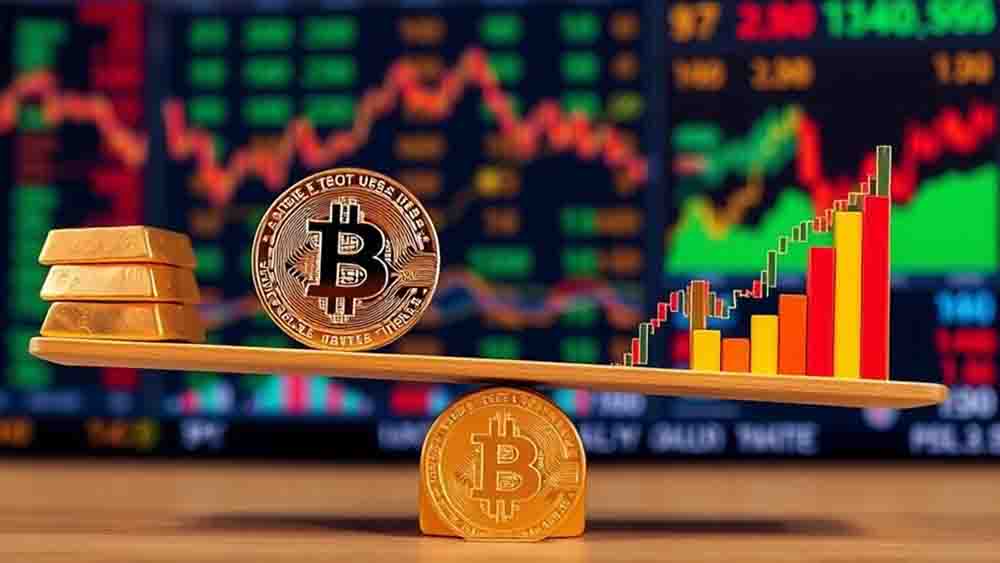
Research Market Influences
Having established a diversified portfolio, it's time to sharpen your focus on market influences. Your investment success in both cryptocurrencies and precious metals hinges on thorough research and understanding of the factors driving price changes.
For crypto markets:
- Monitor daily fluctuations, which can exceed 10%
- Stay informed about regulatory changes affecting digital assets
- Track investor sentiment and market speculation
For precious metals:
- Analyze global economic conditions impacting prices
- Follow geopolitical tensions that may influence demand
- Understand industrial applications driving market value
Both asset classes require:
- Awareness of correlation between cryptocurrencies and precious metals
- Vigilance in monitoring news and trends for timely investment adjustments
- Understanding of how regulatory shifts can alter the investment landscape
Assess Liquidity Requirements
Liquidity considerations play an essential role in your cryptocurrency and precious metal investment strategy.
When evaluating your liquidity requirements, it's vital to understand the differences between physical precious metals and digital assets.
Physical metals often require more time to sell and may involve dealer negotiations, potentially affecting your ability to access cash quickly during market fluctuations.
- Digital assets, including cryptocurrencies and digital precious metals
- Offer greater liquidity and lower transaction costs
- Allow for faster buying and selling
- Provide more flexibility in responding to market conditions
- Physical precious metals:
- May take longer to convert to cash
- Can be subject to premiums or discounts based on market conditions
- Offer tangible security but with potentially reduced liquidity
To balance your investment portfolio and maintain financial flexibility:
- Diversify across both physical and digital assets
- Allocate a portion of your investment funds to more liquid options
- Develop trading strategies that account for varying liquidity levels
- Regularly evaluate your cash access needs
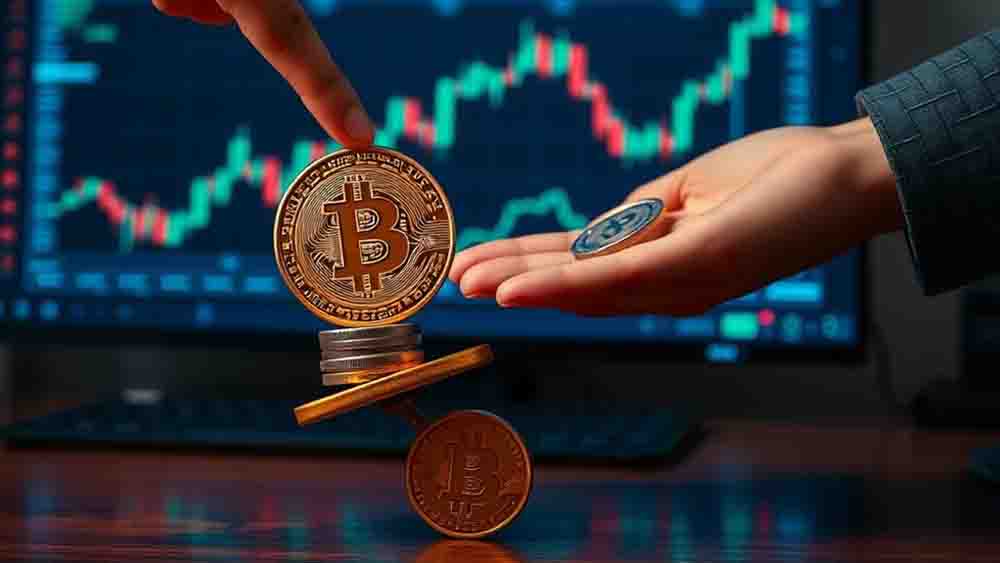
Understand Tax Implications
While investing in cryptocurrencies and precious metals can be lucrative, it's vital to understand the tax implications that come with these assets. Your portfolio's composition and how you manage it can greatly impact your tax obligations and overall financial goals.
When investing in precious metals, consider that certain gold coins from The Royal Mint in the UK are exempt from Capital Gains Tax (CGT). However, other forms of precious metal investments may incur taxes on gains.
Crypto investments, on the other hand, are generally subject to taxation, with profits often treated as capital gains.
To navigate these complexities, it's important to:
- Keep detailed records of all transactions
- Understand specific tax rules for both asset classes
- Consider inheritance and gift tax implications
Failing to maintain accurate records can lead to complications in tax reporting and potential penalties.
Given the considerable risks and varying tax treatments based on your risk profile and investment choices, consulting a tax advisor is highly recommended. They can help you optimize your investment strategy while ensuring compliance with relevant tax regulations, ultimately supporting your long-term financial objectives.
Implement Secure Storage Solutions
Implementing secure storage solutions is paramount when investing in cryptocurrencies and precious metals. For physical precious metals, consider professional vault services like The Royal Mint's secure vault to mitigate risks of theft and damage.
These facilities offer robust security measures and often provide extensive insurance coverage, protecting your assets against potential losses.
In the crypto space, secure wallets with strong encryption are essential for safeguarding your digital assets from hacking and unauthorized access.
When dealing with digital precious metals like DigiGold, evaluate the security measures of the platform managing these assets to ascertain your investments are well-protected.
To enhance your storage strategy:
- Regularly audit and update your storage methods to adapt to changing security threats
- Stay informed about technological advancements in secure storage solutions
- Consider a combination of physical and digital storage options to diversify risk
- Review insurance policies carefully, noting fees and exclusions
- Evaluate liquidity needs when choosing between physical and digital storage
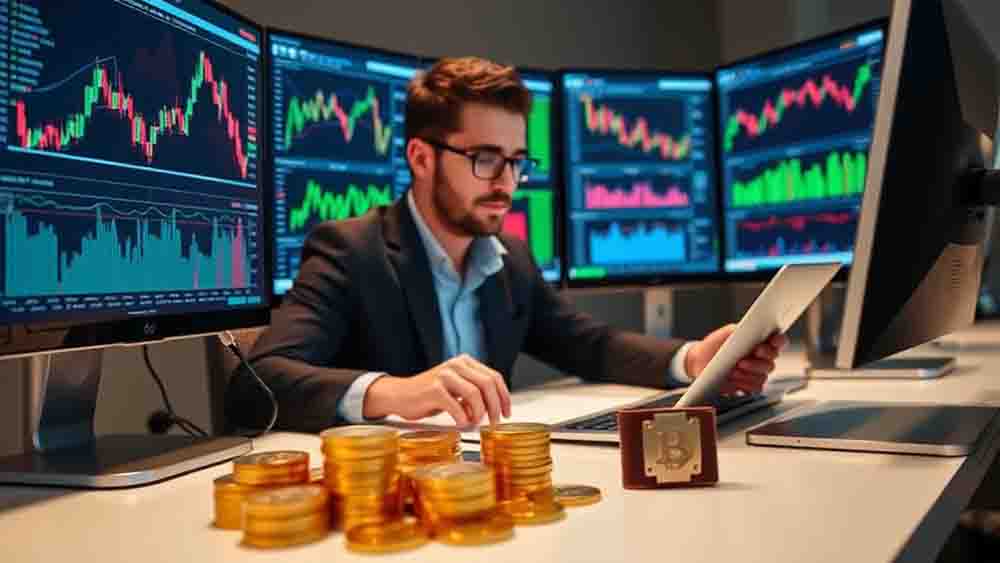
Frequently Asked Questions
How Do Geopolitical Events Impact Cryptocurrency and Precious Metal Investments Simultaneously?
Geopolitical events can notably impact both cryptocurrency and precious metal investments simultaneously.
During times of global uncertainty, you'll often see investors flock to precious metals as a safe haven, driving up prices. Simultaneously, cryptocurrencies may experience increased volatility.
For example, political tensions or economic sanctions can lead to a surge in gold prices while causing fluctuations in crypto markets.
However, some investors view certain cryptocurrencies as digital gold, potentially leading to parallel price movements in response to geopolitical shifts.
What Role Does Investor Psychology Play in Price Fluctuations of These Assets?
Investor psychology plays an essential role in price fluctuations of cryptocurrencies and precious metals.
You'll notice that fear, greed, and herd mentality often drive rapid changes in these markets. When positive news breaks, investors may rush to buy, causing prices to surge. Conversely, negative events can trigger panic selling, leading to sharp declines.
This emotional decision-making can create volatile price swings, exaggerating both upward and downward movements. Understanding these psychological factors can help you make more informed investment choices.
How Can I Verify the Authenticity of Physical Precious Metals?
To verify the authenticity of physical precious metals, you can take several steps:
- Use a reputable dealer: Purchase from established, certified sellers with positive reviews.
- Check for hallmarks: Look for official stamps indicating purity and origin.
- Conduct specific gravity tests: Compare the metal's density to known standards.
- Utilize XRF analyzers: These devices can determine metal composition accurately.
- Seek professional appraisal: Consult experts for thorough authentication.
- Request certificates: Obtain documentation of the metal's authenticity and origin.
These methods will help guarantee you're investing in genuine precious metals.
Are There Any Eco-Friendly Cryptocurrency Mining Options for Environmentally Conscious Investors?
You have several eco-friendly cryptocurrency mining options to evaluate.
Proof-of-stake (PoS) systems consume considerably less energy than traditional proof-of-work methods.
Some cryptocurrencies, like Chia, use hard drive space instead of processing power, reducing electricity consumption.
Solar-powered mining operations are gaining traction, harnessing renewable energy.
Additionally, companies are developing more energy-efficient mining hardware.
You can also invest in cryptocurrencies that prioritize sustainability or support mining operations using clean energy sources to align with your environmental values.
What Are the Best Practices for Creating a Balanced Exit Strategy?
To create a balanced exit strategy, you'll want to take into account several key factors:
- Set clear profit targets and stop-loss levels
- Diversify your exit methods (e.g., partial sells, trailing stops)
- Monitor market trends and adjust your strategy accordingly
- Plan for tax implications of your exits
- Take into account dollar-cost averaging out of positions
- Have a timeline for gradual portfolio reduction
Remember, your exit strategy should align with your overall investment goals and risk tolerance.
Regularly review and adjust your plan as market conditions change to guarantee it remains effective.
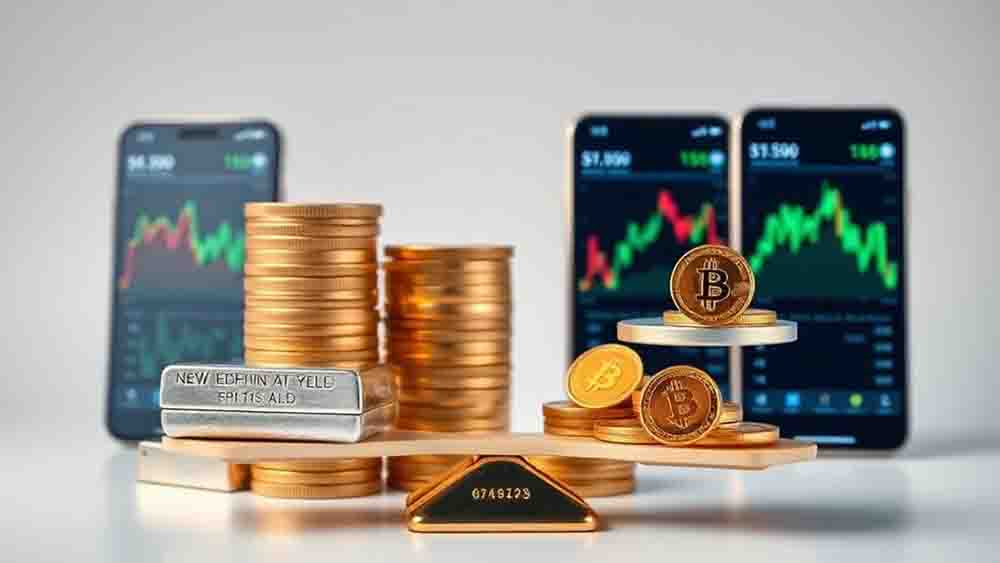
Conclusion
By following these tips, you'll be better equipped to navigate the complex world of cryptocurrency and precious metal investments. Remember to diversify your portfolio, stay informed about market trends, and prioritize secure storage. Don't forget to take into account liquidity needs and tax implications. While both asset classes carry risks, a balanced approach can help you capitalize on potential gains while minimizing potential losses. Always consult with a financial advisor before making significant investment decisions.







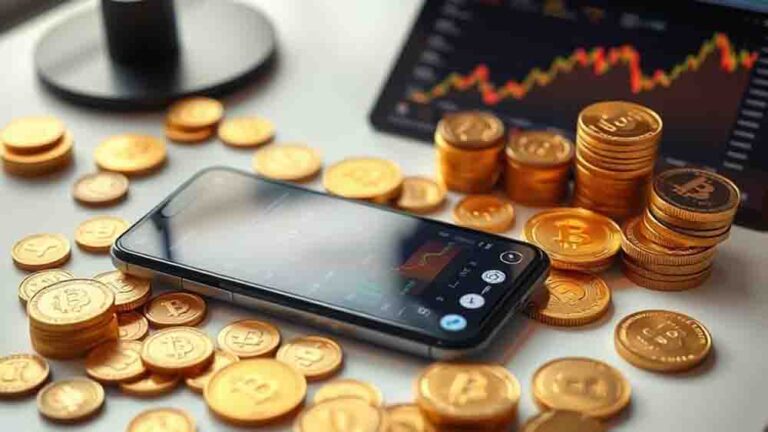


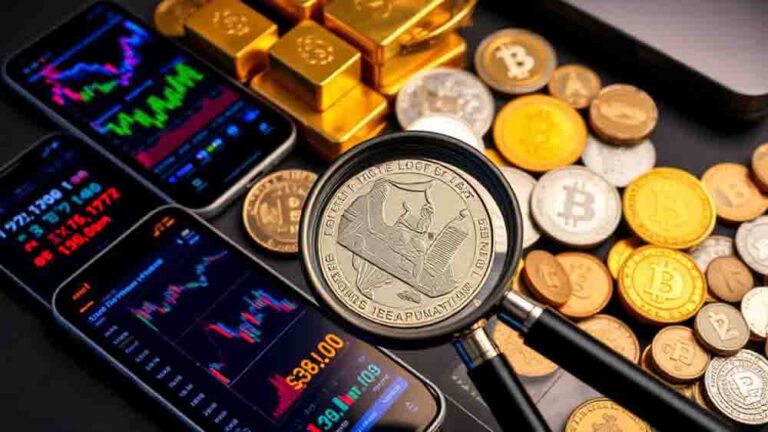

One Comment